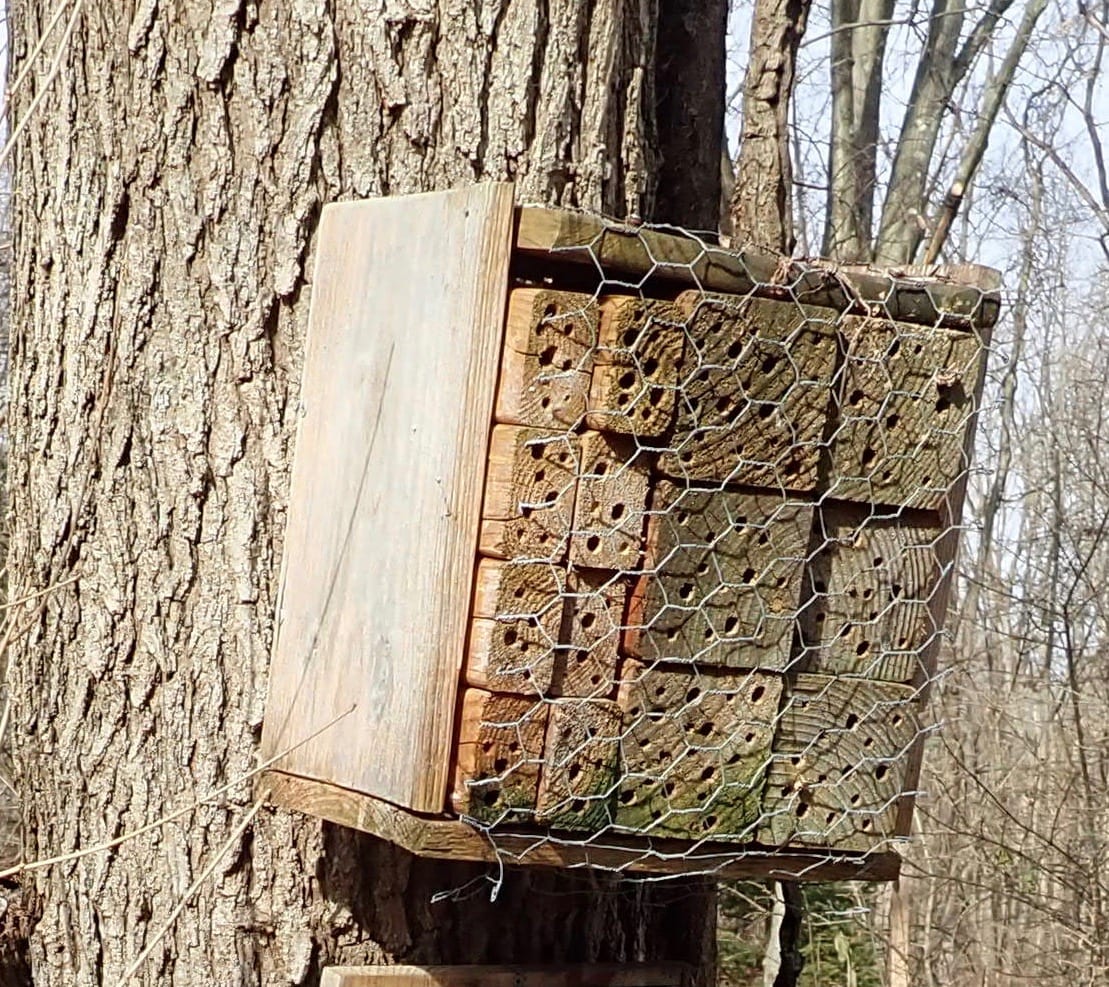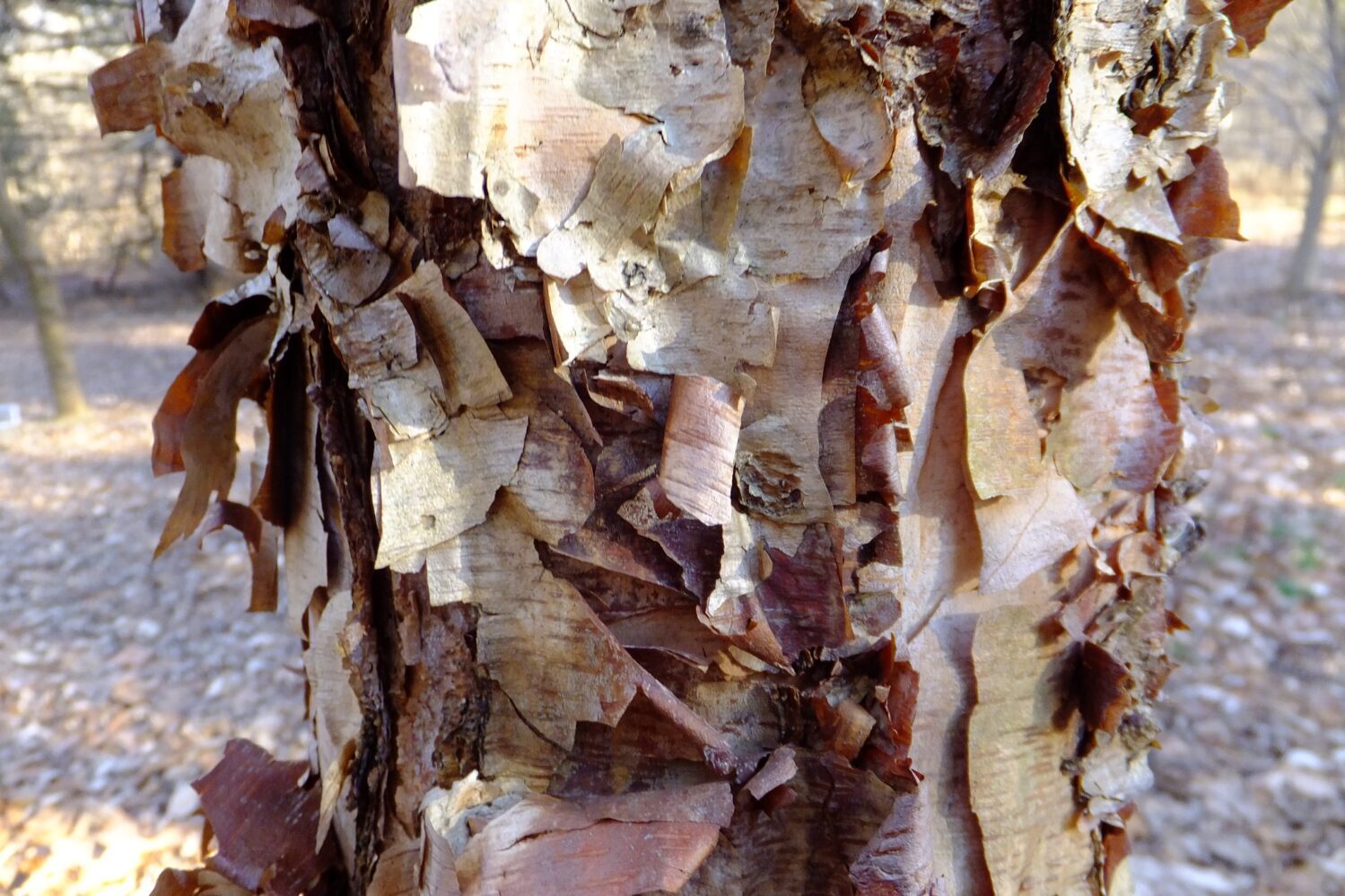See Spring Garden Workshops at NNC here!
Originally published in the Easton Irregular
Dormancy is a gift. As temperate zone gardeners, we get the chance to step away from the sometimes frustrating task of trying to coerce nature into doing our bidding … and simply enjoy. Our garden plants rest when the daylight hours shorten and the nights grow cold, but the natural world carries on, as beautiful as ever.
If you think of gardening as a conversation with nature, winter offers us an opportunity to better understand nature’s ways and learn to speak its intricate language.
A Time for Observation
When the leaves fall, the view becomes cleaner, simpler. We can see the fascinating structures of vines, their stems or tendrils curling around a branch or trellis one way or the other. The direction of the circular growth—which has a name, circumnutation—is determined by a quirk of genetics. Some species twine clockwise, others counterclockwise. They may twist or scramble, or produce wiry structures called tendrils that grab where they can. Or they may use hairy roots or adhesive pads to make their way up a wall or trunk. One way or another, they seek the sun.
Signs of animals become more apparent in winter—scat on the trail, deer rubbings on saplings, abandoned woodpecker holes, probably occupied by secondary nesters. Praying mantis egg sacs reveal themselves, as do the egg masses laid by assassin bugs, those fierce garden predators. You’ll see swellings created by gall flies on goldenrod stems, and abandoned puffballs, the handiwork of tiny wasps, lying under oak trees. Gall makers of many kinds create these abnormal plant growths, mostly benign, as part of their life cycles. Once you notice them you’ll see them on stems and leaves everywhere.
Mosses spring to life when the temperatures drop. They inhabit shady, acidic parts of your lawn; they decorate porous cinder blocks and

Moss does not grow only on the north side of a tree. The north side tends to be shadier in our hemisphere so it does have that tendency. However, It will grow in any moist shady spot.
garden rocks and sidewalk cracks; they thrive at the bases of trees—the north side or any side where the conditions are right. “Mosses on trees are a good sign, their absence a concern,” writes Robin Wall Kimmerer in her book, Gathering Moss.
Mosses have threadlike rhizoids that anchor them, instead of roots. They soak up water like a sponge and in fact they depend on moisture to sexually reproduce, the sperm from the male structures swimming through water to fertilize the eggs. At certain times of year most mosses produce large numbers of capsules, each of which is filled with thousands of spores. As the capsules dry out and mature, they open and the spores are carried by the wind, germinating only if they land in a suitable habitat.
“There is an ancient conversation going on between mosses and rocks, poetry to be sure. About light and shadow and the drift of continents. This is what has been called the ‘dialect of moss on stone’—an interface of immensity and minuteness, of past and present, softness and hardness, stillness and vibrancy, yin and yang,” Kimmerer writes. The green carpet can grow through the winter and when the snow melts, you see it, lush and green and inviting.
Winter is a Time for Learning

Beech leaf buds are very distinctive, and easy to identify in winter. Their winter leaves are marcescent, that is, withered and dried yet still attached.
Visit an arboretum or nature center in the dormant season to hone your ID skills. Leaf buds and flower buds are all set to go though spring may be weeks away, and each is characteristic of its species. Beech leaf buds are long and pointy, while horse chestnut buds are plump and glistening. Oak and beech trees hold onto their dead leaves, a characteristic—called marcescence—
that makes them a cinch to identify in winter. Our native spicebush sets its round flower buds in fall. If that’s not enough of a clue, sniff its bark.
Or connect with nature through books. “The Lost Words,” by Robert Macfarlane is high on my list—a celebration of common words concerning nature that had been dropped from a revision of the Oxford Junior Dictionary. Macfarlane highlights acorn, adder, bluebell, dandelion, starling, willow, and more with poetry and mystery and beautiful paintings by illustrator Jackie Morris.
Make Mental Notes
Look to make your garden winter-beautiful. Take walks and note what brightens up the landscape and what blooms in the winter garden. Appreciate the peeling paper-like layers of river birch and paperbark maple, the elephant hide-like ripples of beech bark, the contrasting patchy colors of sycamore. Resolve to plant winterberry holly and witchhazel. Anticipate the early blooms of hellebore and snowdrops and winter aconite.
And plan to make your garden more inviting to your garden friends. Construct a solitary bee shelter, or a bat house. Spring will be

Witchhazel Hamamelis ‘Arnold Promise’ Witch hazel blooms from fall to early spring, depending on the species.

This simple bee shelter is easy to build. Mason bees seal off the cells where they have laid eggs with a mortar-like application of mud.
here before you know it, and with it the exponential speeding up of biological activity. We gain 47 minutes of daylight in January, and another 68 minutes in February. Ready or not, break time will be over.
Horticulturist and writer Pam Ruch, caretaker of the Nurture Nature Center Urban Recycle Garden, tends gardens in the Lehigh Valley and beyond.




